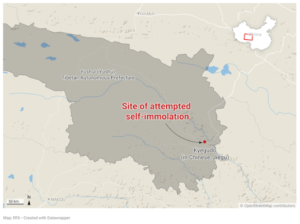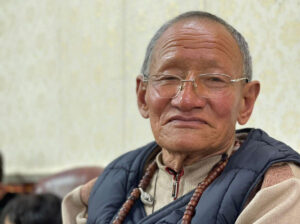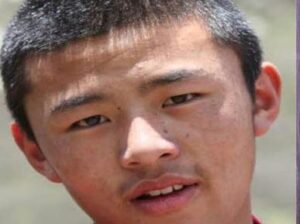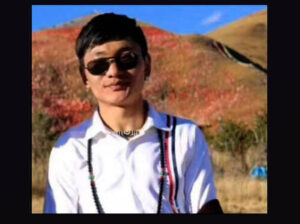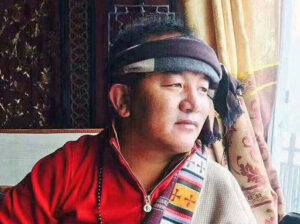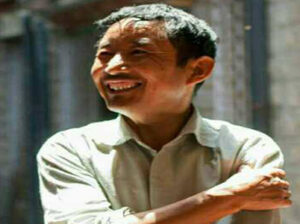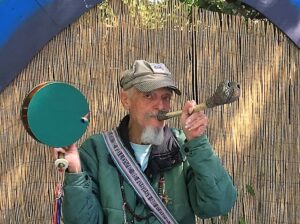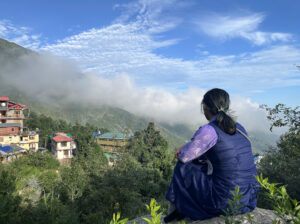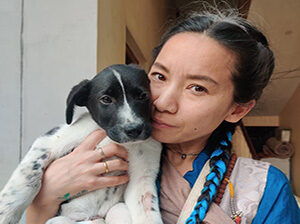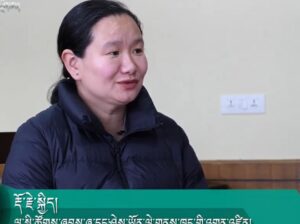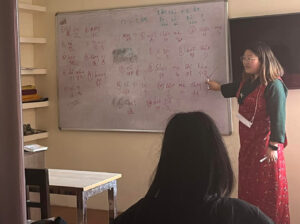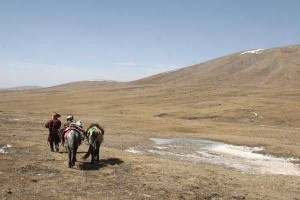 I come from a family of Tibetan nomads, known in Tibet as drogpa. My family kept more than a hundred domestic animals such as yak, sheep, horses, goats and dri. I want to make one thing clear: many people say “yak butter” and “yak cheese” etc. It’s a big mistake. The yak is a male and so does not have milk. A yak female called a dri. You must say “butter from a dri“.
I come from a family of Tibetan nomads, known in Tibet as drogpa. My family kept more than a hundred domestic animals such as yak, sheep, horses, goats and dri. I want to make one thing clear: many people say “yak butter” and “yak cheese” etc. It’s a big mistake. The yak is a male and so does not have milk. A yak female called a dri. You must say “butter from a dri“.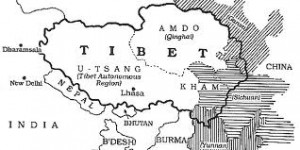
Nomads are found in all three traditional regions of Tibet: U-Tsang, Kham and Amdo. We lived in a black tent made of yak wool. You know that we lived in a remote place. Our lives were simple but very happy. I am from the Kham region, I used to be a shepherd when I was six or seven years old. I was very afraid of going into the forest and I cried many times because my animals went everywhere in the forest and I was very scared to go to find them. There is a huge forest where my family lived at Othog. I mean, we lived in the forest in winter time. We usually moved two or three times every year. We moved to a warm place in the winter, and we moved up into the hills in the summer.
 In summer, thirty or forty nomadic families stay together in a small valley, and more than two or three families live very close to each other. In winter time, we don’t mix different neighbours’ animal together because most of the animals are very weak in the winter time and we need to take extra care of them. In winter time, Tibet is not like India. There is less grass and much snow, and every nomad needs to work harder. Actually we dry grass during summer to feed the animals in winter, but it’s not really enough so we give it to only the poorest animals. We also give them food like wheat porridge and roasted barley. Some animals wear rugs and blankets to keep them warm. I also used to go away with my brothers and sisters, taking the animals to find a good place to have better grass. We lived under trees for more than a month at a time.
In summer, thirty or forty nomadic families stay together in a small valley, and more than two or three families live very close to each other. In winter time, we don’t mix different neighbours’ animal together because most of the animals are very weak in the winter time and we need to take extra care of them. In winter time, Tibet is not like India. There is less grass and much snow, and every nomad needs to work harder. Actually we dry grass during summer to feed the animals in winter, but it’s not really enough so we give it to only the poorest animals. We also give them food like wheat porridge and roasted barley. Some animals wear rugs and blankets to keep them warm. I also used to go away with my brothers and sisters, taking the animals to find a good place to have better grass. We lived under trees for more than a month at a time.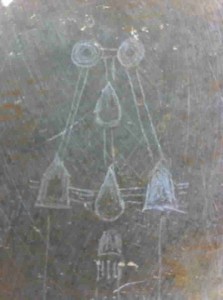
In summer, the dri is milked and we make butter, curd and cheese. We are very happy because more than ten families live very close together and we can mix all the animals and look after them together. All the shepherds gather and play games like Tibetan traditional dance, singing and lots of fun things. We also have competitions for drawing things. Actually nomadic children are deprived of education like writing and reading. There are no schools for them to get an education. But they naturally have the knowledge of our traditional lives and they make beautiful drawings of our national animals, and people who are wearing our traditional clothes with beautiful jewelery, and the different colors of rocks. There are nice flat, big stones which we can use for drawing. We don’t need to buy papers and coloured pens for drawing.
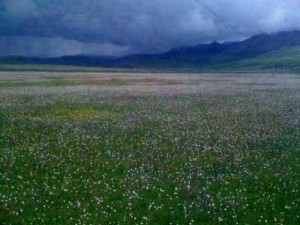 My happiest life has been as a nomad and I really miss it. Sadly at this time, many nomads are made to move to towns because the Chinese government gives them some money to build a house and then forces them to move to the town. They also give a high price to buy animals from nomads. The Chinese try to destroy our nomad lifestyle: they don’t want nomads to keep animals because keeping animals is what sustains the nomad lifestyle, so they buy them. Many nomads have moved to town and sold their animals. I am seriously worrying about the disappearance of nomads because if we don’t have nomads, there isn’t Tibet. Nomads are the heart and soul and real beauty of Tibet. I want to appeal to the Chinese government with all my heart to stop destroying our nomad way of life.
My happiest life has been as a nomad and I really miss it. Sadly at this time, many nomads are made to move to towns because the Chinese government gives them some money to build a house and then forces them to move to the town. They also give a high price to buy animals from nomads. The Chinese try to destroy our nomad lifestyle: they don’t want nomads to keep animals because keeping animals is what sustains the nomad lifestyle, so they buy them. Many nomads have moved to town and sold their animals. I am seriously worrying about the disappearance of nomads because if we don’t have nomads, there isn’t Tibet. Nomads are the heart and soul and real beauty of Tibet. I want to appeal to the Chinese government with all my heart to stop destroying our nomad way of life.
All the uncredited pictures above are of Yangzom’s home in Tibet.





 Print
Print Email
Email